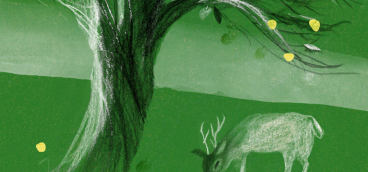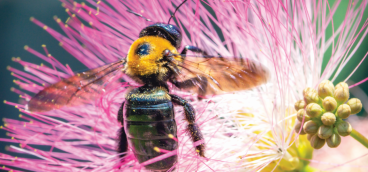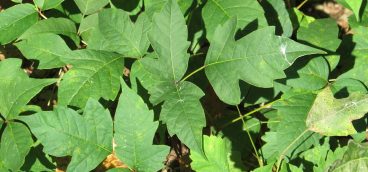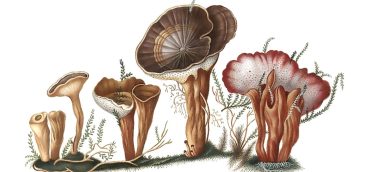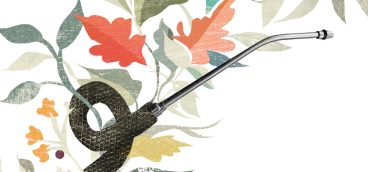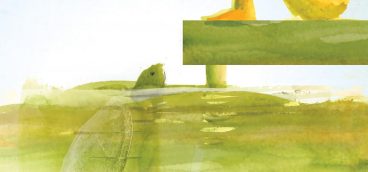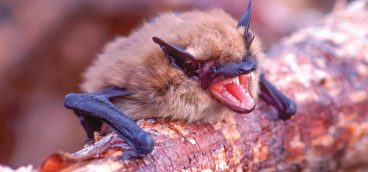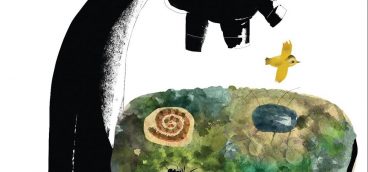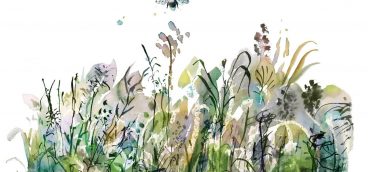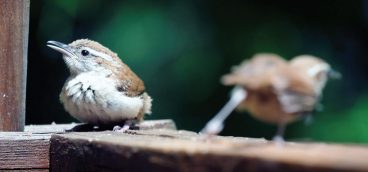On Landscape and Language
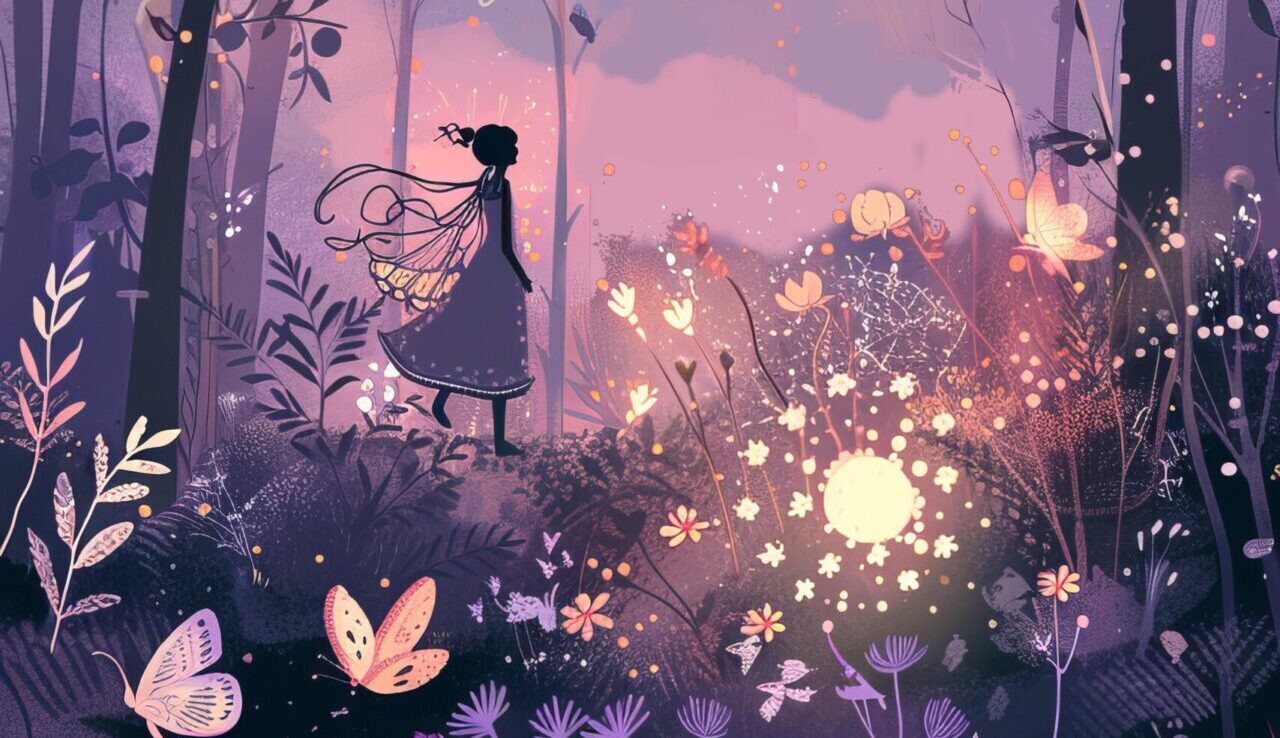
I’ve been thinking a lot lately about our western Pennsylvanian landscape and the language we use to describe it — and I found inspiration in a surprising place — a book about the Gaelic language called “Thirty-Two Words for Field: Lost Words of the Irish Landscape,” by Manchan Magan. Magan tells us that there are 32 Gaelic words for one of our English words. Take our word, field. In Gaelic, branar is a fallow field and cuibhewann is a field tilled in partnership with a neighbor. Plasog is a sheltered field in which a mare would foal. Abuaile is a field for keeping cattle before milking and chthairin is a field with a fairy dwelling in it.
There are 25 additional words in Gaelic for our word, field.
Magan believes these old Irish words are gifts from the ancient past, that they ground us and remind us that we are connected to all things — to fields, hawks, and fairies. And in Ireland, fairies connect people deeply to their environment — so much so that one cannot build a house on a fairy ring. The locals know exactly where those fairy rings are located and such land is strictly protected from human intervention by fairies — a fairy conservancy of sorts.
I have a great deal of respect for fairies. In one of the essays I wrote for this magazine about elder trees on our farm, I made sure not to get on the bad side of the spirits that are supposed to live near that tree. Elders come with many myths — for one, the druids thought the tree holy — and, in more modern times, in Harry Potter and the Deathly Hallows, the most powerful wand in the world was made from the elder tree. If one cuts an elder branch, myth says, one must be on bended knee with hands folded to avoid the wrath of the “Elder Mother.” You can bet I was on bended knee when I cut a branch to observe its hollow center, such branches having been used by ancient cultures to make into flutes, whistles and maple syrup spiles.
Only now are we understanding in this country what the Greeks and Romans understood way before us — the health benefits of the elderberry. The berry is said to help with so many ailments that Hippocrates called the tree “a medicine chest.” Native Americans have long used elder for food and medicine, herbalists recognize its power, and Missouri grows it for research. Yet in Pennsylvania, we try to eradicate the tree. It is a weedy looking thing, not trim and compact, does not belong on a lawn. PennDot sprays the roadsides where elder is likely to grow.
But why, you ask, am I going on about fairies and ancient cultures and the Gaelic words they use in Ireland? We don’t live in Ireland; we live in western Pennsylvania, where my stories are set. But I take a cue from the Irish here — to listen to the natural world, to give voice to the landscape, the birds, bees, bugs, mammals, weeds and the native plants that we have here. To learn the legends and folklore and find the vernacular that best describe our geography, the land on which we all live. Maybe even to listen to fairies.
I try to understand what is happening to these plants and animals and say it to others in a way that makes sense. To slow down, observe and record, to create a language about our western Pennsylvania landscape. “Nature is a language,” Ralph Waldo Emerson said. “And every new fact one learns is a new word.”
I try to give at least a nod to the ancient peoples who came before us, not only the Celts as in Ireland, but our Native Americans, who know so much more about our earth than we do and who offer us their stories and advice if only we would listen. The Cherokee call trees “standing people.” Native Americans know to eat only the ripe, yellow fruit of the mayapple, minus the seeds; the rest of the plant is poisonous. They know how to use stinging nettle to help with arthritis and other ailments. (The Irish also believe that three meals of boiled nettles before the end of May purifies the blood and assures good health.)
In Pennsylvania, many people try to eradicate nettles too, think of them as weeds. To quote Ralph Waldo Emerson again: “What is a weed? A plant whose virtues have not yet been discovered.” But nettles’ virtues have long been discovered. An herbalist told me: “Nettles are one of the most nutrient dense herbs we have, full of vitamins, minerals and antioxidants, and far tastier than spinach.”
We western Pennsylvanians do have our own language of sorts. We call apples that fruit in summer “July apples.” An apple expert in Maine told me that “July apple” is a local nickname — one he’d never heard before. We call a certain morel mushroom, one of the first to emerge in spring from the forest floor, a rubberneck. Gary, the wonderful fellow who repairs our furnace, told me he used to sneak onto our property as a boy with the local men who were out of work and dig our ginseng. Some call ginseng, sang. Ramps are called wild leeks or the ransom. We have ramp festivals in Pennsylvania. We tap maple trees so we have the language of maple sugaring and we call a break in the mountain a “gap.” We might call our lowlands “hollers” and our streams “criks.”
Landscape and language that are married to each other.
Local lore says it will be a mild winter if paper wasp nests hang low to the ground or if the brown band on the woolly caterpillar is wide. A friend says if there is a cloud bank over Laurel Ridge that a “storm’s a brewing” and our babysitter used to say she could hear “the ridge roar.” The last snow of the year, she told me, is called “onion snow” because that’s when we should plant onions. I followed animal tracks one winter day to pay witness to those creatures with which I share this small patch of earth. Those animals are not everywhere, but they are here, in our backyards, their tracks a language in themselves. What tracks, I wonder, will we humans leave when we are gone?
A local friend who grew up here, a deer hunter for his whole life, told me bad luck comes to anyone who shoots an albino deer. I have seen only one albino deer in 37 years and it was so shocking I pulled the car over, stopped and stared. My husband was on horseback when he saw one and he was so confused by the different coloring he was sure it was a goat. My friend’s father refused to shoot the albino deer, but then a fellow they knew did, and killed it. The myth was shattered because the next day the fellow who shot the deer hit the lottery and won $100,000. But within a month he’d had a heart attack and according to my friend, was never the same, has had health problems ever since. Perhaps we western Pennsylvanians do believe in fairies?
Is it our imagination? Maybe. But I think that fairies and myths and superstition somehow bring us closer to the natural world, give us a bigger stake in it, perhaps make us care about it more, might even make us more inclined to save it.
We now have in our woods a sad story about our ancient ash tree — a tree once used to make baseball bats, an American pastime if there ever was one. And that story is that we allowed into this country, from Asia, a bright green beetle — the emerald ash borer — and that beetle has decimated our Pennsylvania forests as we had come to know them.
For my essay on native plants, I learned that chickadees feed their babies 6,000-9,000 caterpillars for the two weeks the babies are in the nest. That’s one species, and one brood, in one year. That fact — those words, that story — made me rethink the role of caterpillars in our ecosystem; I’ll never look at caterpillars the same way again.
One of my favorite stories was about the chimney swift — a bird that never alights until it tucks itself into our 19th-century chimney at night. I love the fact that women did much of the research on chimney swifts in the 19th century — a story of women and birds. Why? Because the women were at home, while the men were out in factories or in fields, and it was the women who bonded with these small torpedo-shaped birds that lived in their chimneys. And the birds lived in chimneys because we’d cut down the old growth trees that had once been their home — and their name was changed from the American swift to chimney swift. Their numbers are down 72 percent nationwide.
Or the kingfisher, one of my all-time favorite birds. I love to watch them each summer dive across the pond and listen to their rattling call. The kingfisher has all sorts of Native American myths surrounding it, some positive, others negative, but the one I prefer to apply to our little valley here is that the kingfisher represents peace and prosperity.
Or snapping turtles that everyone loves to hate and with which they make turtle soup, yet snapping turtles are so important to our Pennsylvania ponds. They keep ponds clean by eating carrion and consume vegetation that balances the ecosystem for fish, birds and dragonflies — and dragonflies eat lots of mosquitos.
And the story of an Eastern phoebe, a bird that has nested every year on the light fixture outside our pantry door, a bird being attacked, I believe, by the house sparrow, a bird we introduced to this country in the 1850s to control caterpillars.
Or the stories of the floods we now get on the farm living as we do at the base of three hills. What was once the 100-year flood now comes three or four times a year, a story of our changing climate.
I tried to tell the story of our Pennsylvania bats, but so few are left on our farm now. Where we once had many flying overhead at dusk, last summer when I closed the chicken coop, I saw two each night (up from one the year before). Ninety-nine percent of Pennsylvania bats have been killed by white-nose syndrome, a fungus that we likely moved unknowingly on our shoes, clothing or outdoor gear from caves in Europe or Asia around 2006.
And, of course, we Pennsylvanians are most blessed with the language and stories of Rachel Carson, who lived her early life on the Allegheny River and warned us of environmental hazards — her words having sadly come true across the world.
These are some of the words and stories of our Appalachian landscape, of our place, our lives — and I wonder, if, like Scheherazade, the fictional character in the Middle Eastern tale, One Thousand and One Nights — who tells a story to the king each night to save her life, if we keep telling these stories: might we also save our planet?
I was disappointed when I read a book edited by Barry Lopez and Debra Gwartney called Home Ground, Guide to the American Landscape, where such landscapes as dunes, avalanches and glaciers are described by 45 writers about the places they live — and there is not one entry from western Pennsylvania. Writers from Cape Cod, Iowa, Montana, North Carolina, Maine, and Alaska, but none from here. The closest we get is southern Appalachia and that is not us.
What are our lost words of our PA landscape? If we look at our fields, how do we describe them? The field where we keep our cows? The field where we cut hay? The field my husband and daughter like to gallop across? The field where last summer I saw a killdeer? I think it is time we give thought to the words that describe what we have here, that tell our stories. I think we need to look harder. I suggest we collect these words together. I, for one, am going to keep looking for more words and more stories that define us.
I shudder to think what my words and my stories of landscape would be if I were a writer today living in Pacific Palisades — a landscape loved by those who live there. Or recently in Asheville, North Carolina, or Louisiana after Hurricane Katrina, or New York City after Hurricane Sandy, and so many other places being destroyed by fire or flood or drought. 2024 was the hottest year on record. What are we doing to our universe? How should we tell those stories? Environmental writers everywhere are asking this question.
I feel lucky to live in a green valley surrounded by two ridges of the Appalachians, in a place largely unchanged for many years. And I think of two wise men, two of our first environmentalists: Aldo Leopold who said “the oldest task in human history — to live on a piece of land without spoiling it.” And Henry David Thoreau, who said: “A man is rich in proportion to the number of things he can afford to let alone.” We must be better stewards of the land.
Many people have told me they think my book, A Farm Life, is a love letter to my family and they are correct. But my book is also a love letter to the land on which I live — an appreciation and a devotion to what we have in western Pennsylvania. How grateful I am to have raised my family in a spot of such beauty and abundance. I wanted them to grow up in a place where they could catch crayfish in a stream, snowshoe in the woods, and pick morels in early spring. I am happy to say that we did all that.
One of my favorite trees on the farm was a big, old maple, which was dying and I wrote about its demise in 2022 for The New York Times. We had to take it down — it broke my heart — but I wrote a follow-up story that appeared in that newspaper last October. That story ended on a happier note because Corey Snyder, a local woodturner, made the tree into beautiful bowls. As much as I miss that beautiful, old tree — and I see her still every time I walk out to the side yard — at least she has a second life, not just here, where she put down her deep roots, but across our country.
Five hundred, sixty-seven New York Times readers from places such as Canada, Colorado, Vermont, and Italy wrote and told me about their maples, hickories, apple trees, sequoias, oaks, and horse chestnuts. They responded to the language that described our landscape — words not about fields, but about our trees, the native species we have growing here, which are filled with bird nests and give us shade and beauty and maple syrup — a sugar maple. Our trees. Their responses gave me hope, not just that people care about trees, but that they feel grounded to the land where they live — and that, in my opinion, is the only thing that can save us.
Wendell Berry said it best:
“The world and our life in it are conditional gifts. We have the world to live in, and the use of it to live from, on the condition that we will take good care of it. And to take good care of it we have to know it and we have to know how to take care of it. And to know, and to be willing to take care of it, we have to love it. ”


